Ever heard of public procurement? Public tenders? Public spending? It is what your government does with your hard earned taxes: hires companies to do things. In return for your taxes, companies build roads, buildings, deliver cozy office chairs for the ministries, or take care of catering for public schools.
A lot of data on public spending is open. But the government also spends A LOT of money. To explore the public spending of France for example, you need to go through roughly 2 million tenders. That is a certainly a lot to handle for your spreadsheet application. Moreover: tendering is a quite technical matter and so there is a lot to take into account: buyer and seller details, tender procedures, award criteria, sector codes, competition, … the list goes on. Spreadsheets of dozens of columns can (and will) get confusing fast.
To bridge the gap that might stand between a curious journalist and hordes of data, we have created Elvis (map me tender), a tool that makes it easy to see who the government hires to do things and how much money they give them.
What can I do with Elvis?
In Elvis, you draw networks (or graphs) of public spending data of a specific company or country, sector, time range. We try to keep the choices finite and as clear as possible.
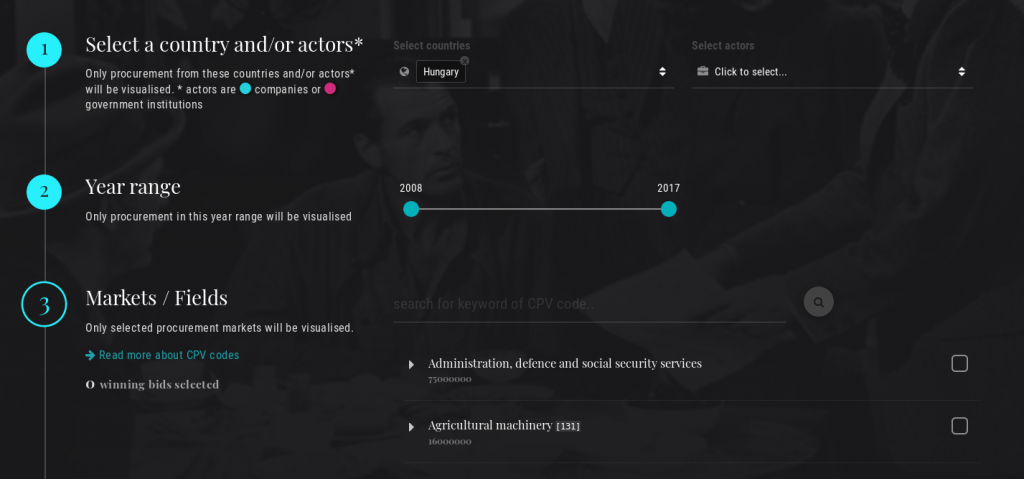
You can visualize sectors in a country, such as IT spending or health care spending , or choose companies from the menu and see in which countries and sectors they are active.
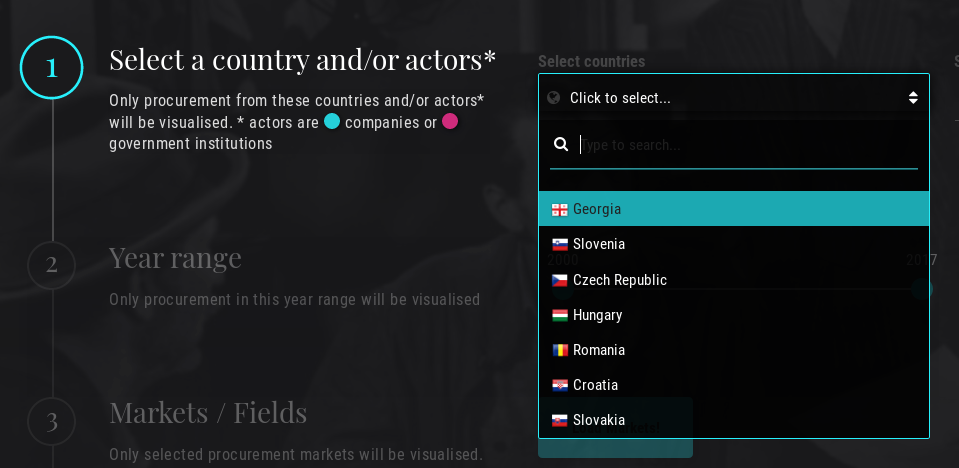
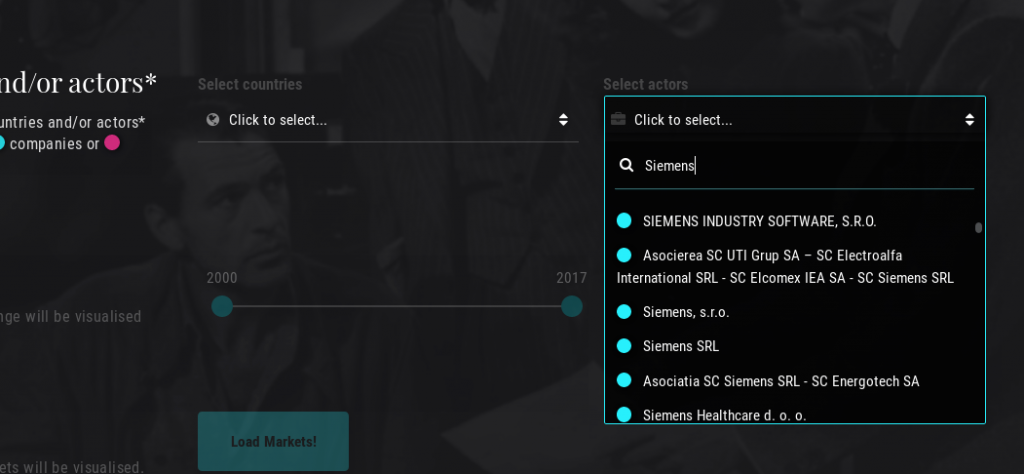
Based on your choices, Elvis will draw a network.
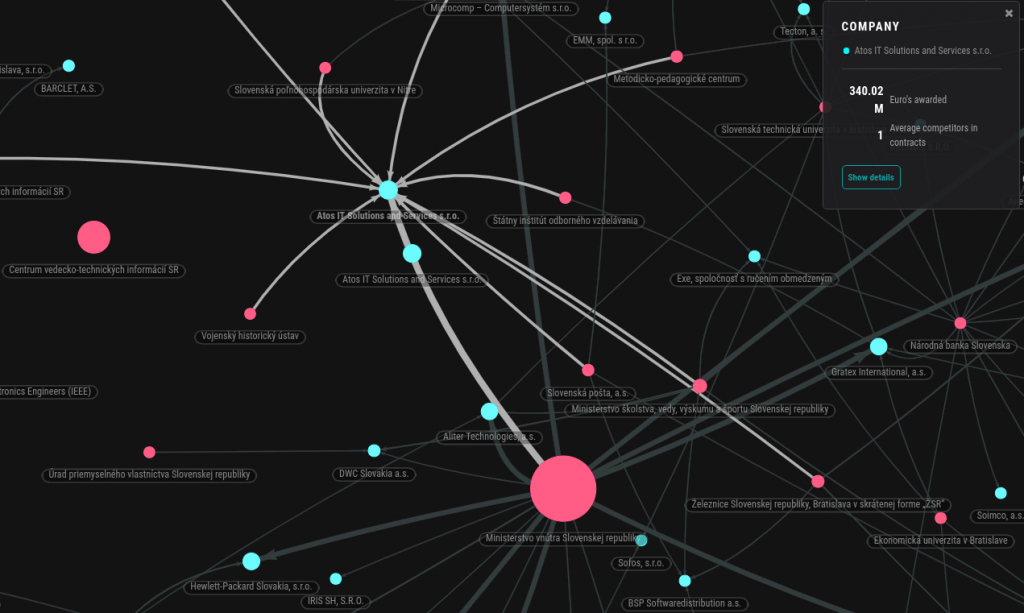
The network comes with a sidebar which lists of all the companies and governments in the network. You can sort and search these lists.

Clicking on one of the companies or governments brings you to list of tenders they have participated in. Again, you can sort these however you like.
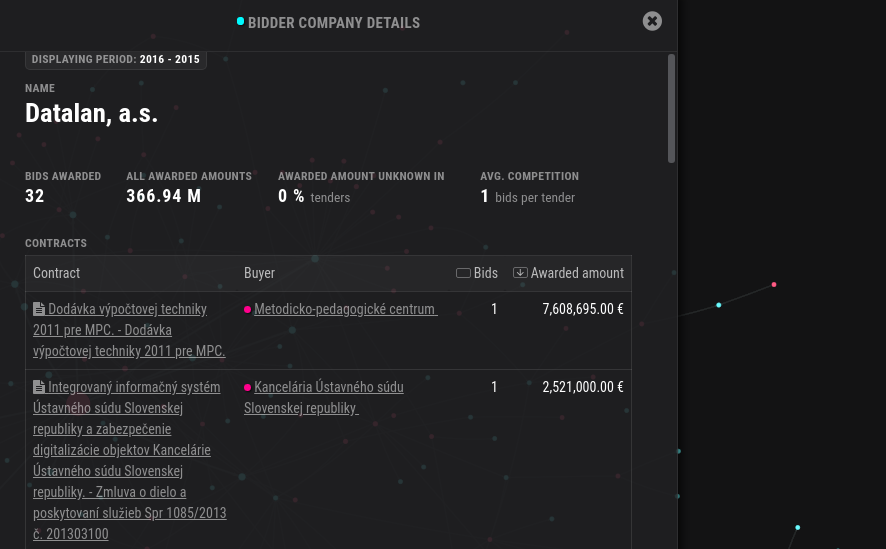
In the tender details, you can see details of the tender (surprise!) and click through to other platforms such as TED (Tenders Electronic daily) and the opentender.eu dashboard.
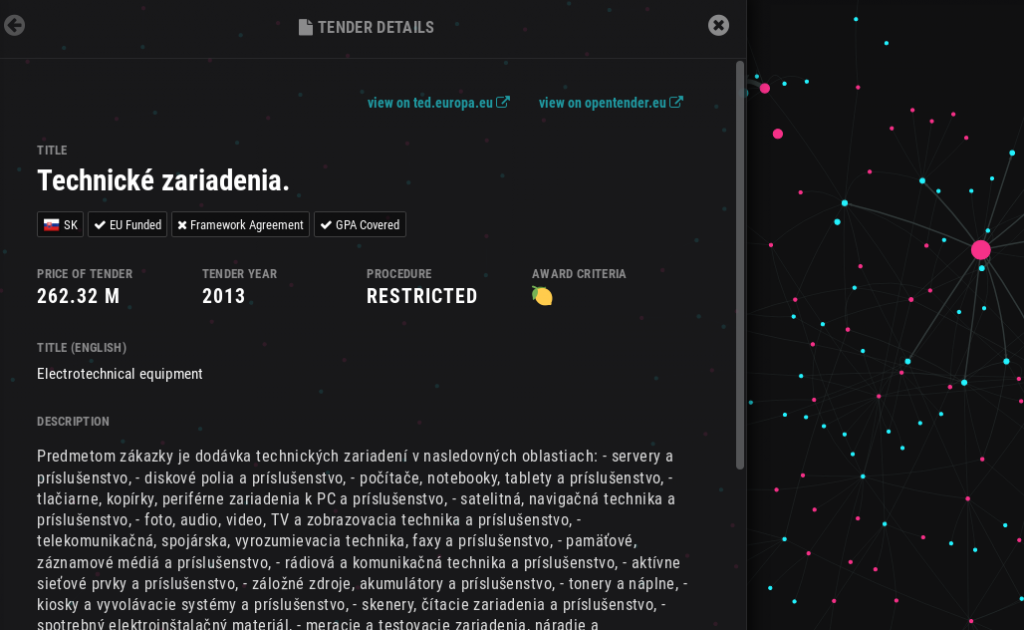
But wait … there is more!?
The same company can show up with different spelling. This is because in the EU, there is no standard on how to fill in the name of the company. We have therefore implemented a simple tool to merge multiple dots on the network.
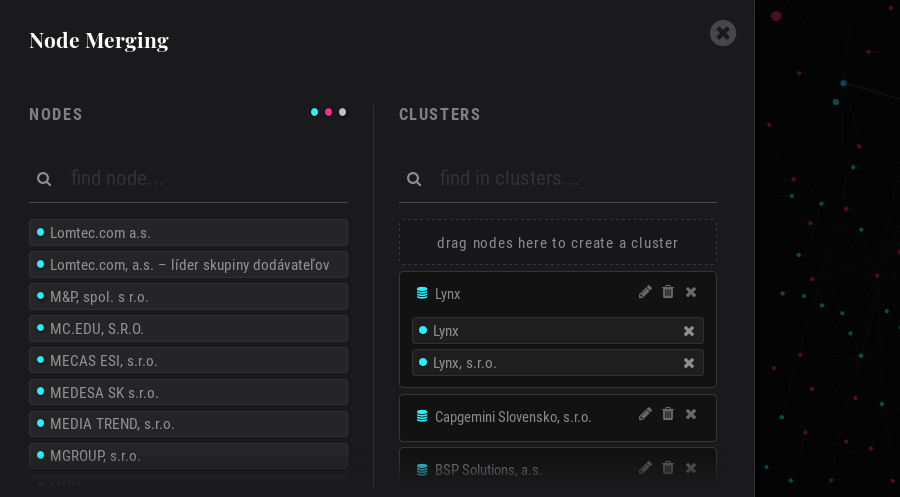
There is also no standard to how much of the information is filled in. It so happens, that the government does not want to share how much a tender costs for example. After a long discussion on how do we show this sort of missing data in Elvis, we have settled on … fruit.
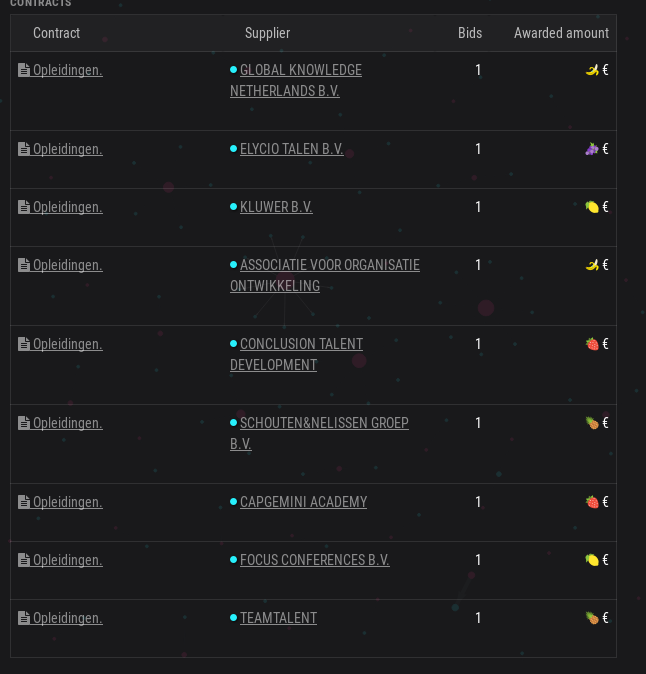
Why only Eastern Europe?
Despite we have data from the whole of the EU, Elvis only offers data from the countries of the former Eastern block. One of the reasons for this is the data quality: tenders in the eastern part of Europe are more transparent.
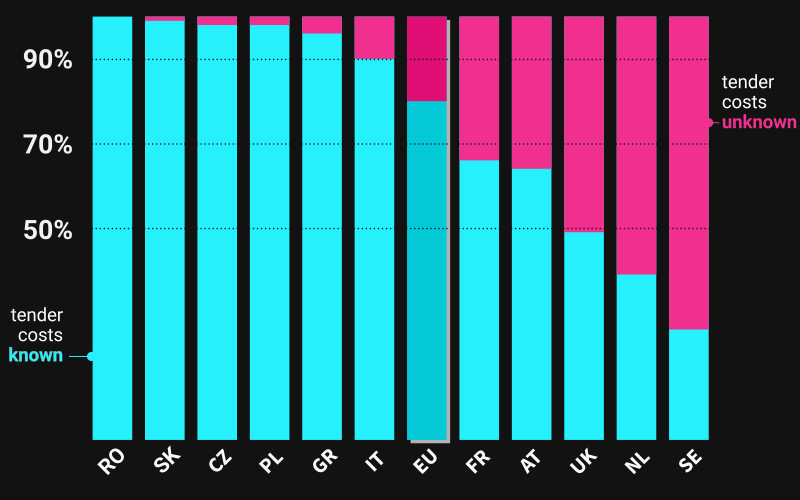
Another important reason are available resources. The data (7 million tenders) is too big for our database at this moment. We are however looking for means to develop it further.
Do you like Elvis?
Do you have a question or idea? Would like to work with us? Feel free to contact us at tech [at] tenders.exposed !
Adriana Homolova is a freelance data journalist, lecturer and the project leader of Elvis. She works with Investico and OneWorld in The Netherlands. She digs into and visualizes data for her colleagues, teaches programmig to other journalists and organizes the hackathon preceding the European Investigative Journalism conference.








